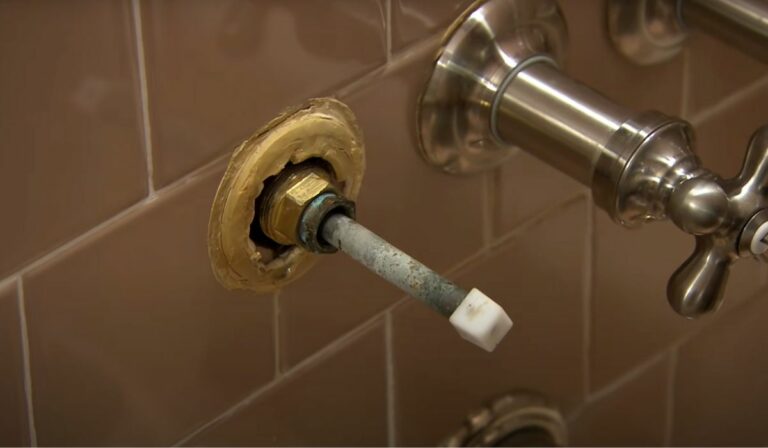When Is the Metor Shower
You can catch meteor showers multiple times a year, with major peaks around early January (Quadrantids), mid-August (Perseids), mid-December (Geminids), and other dates like April (Lyrids) or October (Orionids). The best viewing is usually after midnight, in dark, clear skies away from city lights. Weather and moonlight play a big role in visibility, so planning helps. Keep going to discover the best spots, timing, and tips for spotting these dazzling sky streaks.
What Causes Meteor Showers
Have you ever wondered what causes meteor showers to light up the night sky? When Earth passes through a trail of debris left by a comet or asteroid, bits of dust and rock enter our atmosphere at high speeds. These tiny particles burn up due to friction with the air, creating bright streaks of light you see as meteors.
The glowing trails are what we call meteor showers. The intensity and frequency depend on how dense the debris stream is. Since these streams orbit the sun, their positions relative to Earth change throughout the year, leading to predictable meteor showers.
How to Identify Meteor Showers
Although meteor showers can seem random, you can identify them by tracking their radiant point—the spot in the sky where meteors appear to originate. To find this point, you’ll want to know which constellation the shower is associated with. Once you locate that constellation, focus your gaze there.
Meteors will streak outward from this area, making it easier to distinguish them from regular shooting stars. Using a star map or an astronomy app can help you pinpoint the radiant point quickly.
Also, meteor showers are most visible after midnight when the sky is darkest and your location faces the direction of Earth’s movement. By understanding these cues, you’ll confidently identify meteor showers and enjoy the spectacle they provide.
Major Meteor Showers Throughout the Year
Since meteor showers occur at specific times each year, you can plan your viewing by knowing the major ones. The Quadrantids light up the sky in early January, offering a brief but bright display.
In April, the Lyrids bring a moderate show with fast meteors streaking across the night.
The Eta Aquariids peak in early May, especially visible in the Southern Hemisphere.
July features the Delta Aquariids, providing a steady flow of meteors.
The Perseids, one of the most popular showers, blaze through August with impressive rates and bright trails.
October’s Orionids deliver swift meteors linked to Halley’s Comet.
Finally, the Geminids in December offer a spectacular finale with colorful, consistent meteors.
Knowing these showers helps you catch some of the best celestial events yearly.
Peak Viewing Dates for Popular Meteor Showers
Knowing when each major meteor shower reaches its peak helps you schedule the best viewing times. For instance, the Quadrantids typically peak around January 3rd or 4th, offering a sharp but brief show.
The Perseids reach their height around August 12th or 13th, famous for producing up to 60 meteors per hour.
The Geminids, one of the most reliable showers, peak around December 13th or 14th, often delivering bright, colorful meteors.
Meanwhile, the Lyrids shine brightest near April 22nd.
Marking these dates on your calendar ensures you don’t miss out. Each shower’s peak usually lasts a day or two, so planning ahead lets you catch the most meteors when the sky is clear.
Keep track yearly, as peak dates can shift slightly.
Best Times of Night to Watch Meteor Showers
If you want to catch the most meteors during a shower, plan to watch after midnight when the sky is darkest and your location faces the direction of Earth’s orbit. This timing works because Earth moves forward, so after midnight, you’re looking toward the side where debris enters the atmosphere.
Although some meteors appear earlier in the evening, the frequency increases significantly past midnight. Watching between 1 a.m. and 4 a.m. often gives you the best chance to see a steady stream of meteors.
Also, avoid bright moonlight and artificial lights, which can wash out faint meteors. Dress warmly and give your eyes about 20 minutes to adjust to the darkness. Staying patient and comfortable will help you enjoy the meteor shower to its fullest.
Ideal Locations for Meteor Shower Viewing
When you pick a spot for watching a meteor shower, choosing a location away from city lights makes a huge difference. Light pollution from urban areas can drown out faint meteors, so head to rural or wilderness areas where the sky is darkest.
High elevations often provide clearer views since you’re above some of the atmospheric haze. Open fields, hilltops, or lakesides work great because they offer an unobstructed view of the sky in all directions.
Make sure your chosen spot has a comfortable place to sit or lie down, so you can watch for an extended time without straining your neck.
Finally, check that the area is safe and accessible at night, so you can focus solely on the meteor shower experience.
How Weather Affects Meteor Shower Visibility
After finding the perfect spot away from city lights, you’ll need to consider how weather conditions can make or break your meteor shower experience. Clear skies are essential—you won’t see meteors through clouds or fog.
Check the forecast for minimal cloud cover and low humidity, as moisture in the air can blur your view. Wind doesn’t directly affect visibility but can impact your comfort, so dress accordingly.
Avoid nights with a bright moon; its glare reduces the number of meteors you can spot. Even slight haze or pollution can diminish clarity, so choose locations with good air quality.
Tips for Photographing Meteor Showers
Capturing meteor showers takes preparation and patience, but the results can be breathtaking. First, use a sturdy tripod to keep your camera steady during long exposures. Set your camera to manual mode, choose a wide-angle lens, and select a low f-stop for maximum light intake. Use a high ISO, around 1600–3200, but balance it to avoid excessive noise. Focus your lens to infinity before the shower begins.
Compose your shot with a dark, open sky, avoiding light pollution. Use a remote shutter release or timer to prevent shaking. Take multiple long exposures, typically 15–30 seconds each, and review your shots to adjust settings if needed. Most importantly, be patient—meteor showers are unpredictable, but persistence pays off.
Safety Precautions While Stargazing
While setting up your camera and waiting for meteors to streak across the sky, it’s important to keep safety in mind. Choose a well-known, open area away from busy roads to avoid accidents.
Dress warmly, as temperatures can drop quickly at night, and bring extra layers just in case. Always carry a flashlight with red light mode to preserve your night vision without disturbing others.
Let someone know where you’ll be and when you plan to return. Stay aware of your surroundings, especially if you’re in a remote location. Avoid wandering off alone in the dark.
Lastly, protect yourself from insects with repellent, and keep hydrated. Following these precautions helps ensure your stargazing experience is both enjoyable and safe.
How to Track Meteor Shower Predictions
Although meteor showers occur at predictable times, tracking their exact peak can enhance your viewing experience. Start by consulting reliable sources like astronomy websites, apps, or local observatories for up-to-date predictions. These sources often provide precise peak dates and times, along with the expected number of meteors per hour.
Use apps that send notifications about upcoming showers so you don’t miss the best moments. Pay attention to the moon phase, as a bright moon can diminish visibility. Also, check weather forecasts to ensure clear skies.
Frequently Asked Questions
Can Meteor Showers Be Heard as Well as Seen?
You usually can’t hear meteor showers because the meteors burn up high in the atmosphere, too far for sound to reach you. Occasionally, you might hear faint sonic booms from larger meteors, but it’s rare.
Do Meteor Showers Pose Any Risk to Airplanes?
No, meteor showers don’t pose risks to airplanes since meteors burn up high in the atmosphere. You won’t have to worry about impacts or damage while flying through a meteor shower’s path.
How Do Meteor Showers Affect Satellites in Orbit?
Meteor showers can damage satellites by hitting them with tiny, fast-moving particles. You’ll notice satellites sometimes adjust their orbits or activate shields to avoid harm during intense showers, helping keep your communications and GPS running smoothly.
Are There Any Cultural or Historical Significances of Meteor Showers?
You’ll find that many cultures see meteor showers as omens or messages from gods, inspiring myths and celebrations. People have long interpreted shooting stars as signs of change, hope, or wishes coming true.
Can Pets See or React to Meteor Showers?
Yes, your pets can see meteor showers, but they might not recognize them as you do. They could react to sudden flashes or sounds, showing curiosity or anxiety depending on their sensitivity and temperament.
Conclusion
Now that you know what causes meteor showers and when to catch the best ones, you’re all set for an amazing night under the stars. Just remember to check the weather, pick a dark spot away from city lights, and bring your camera if you want to capture the magic. Keep an eye on peak dates and times, stay safe while stargazing, and enjoy the spectacular show nature puts on for you!



